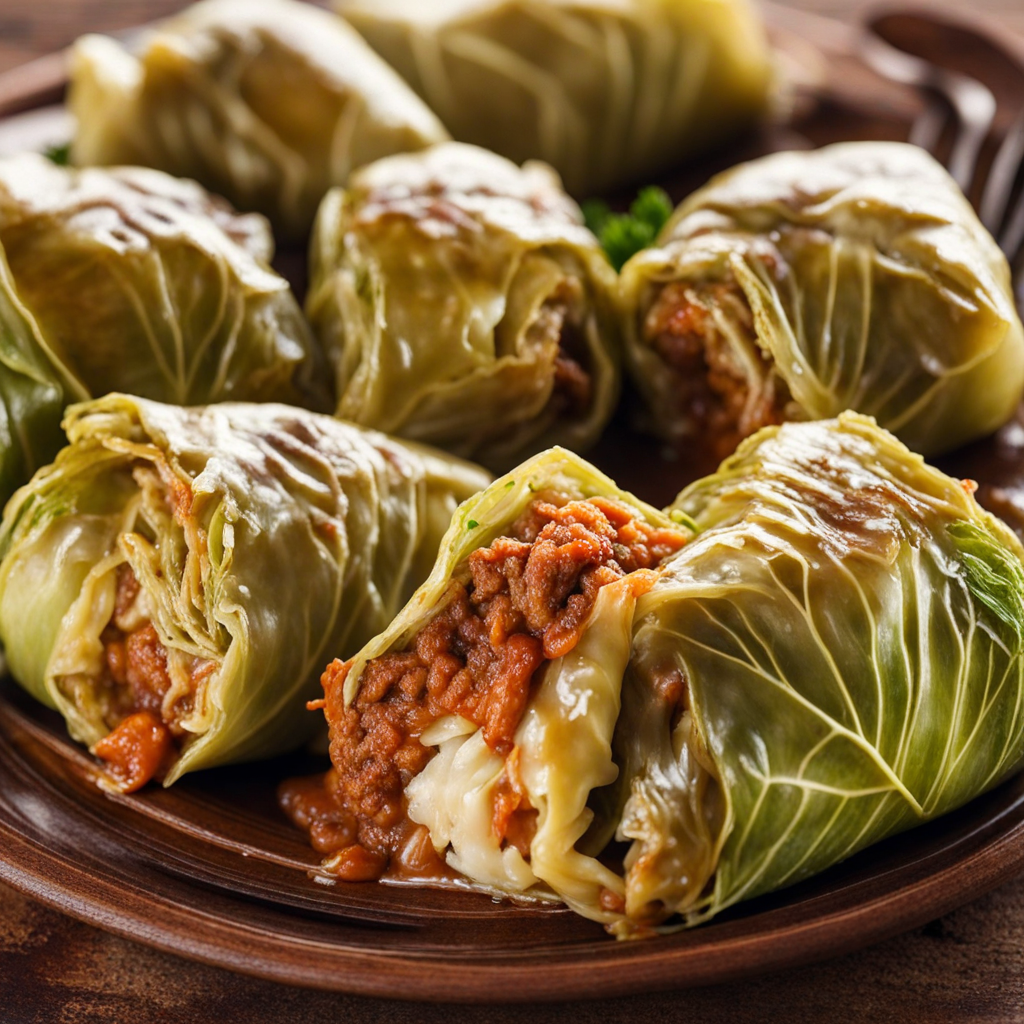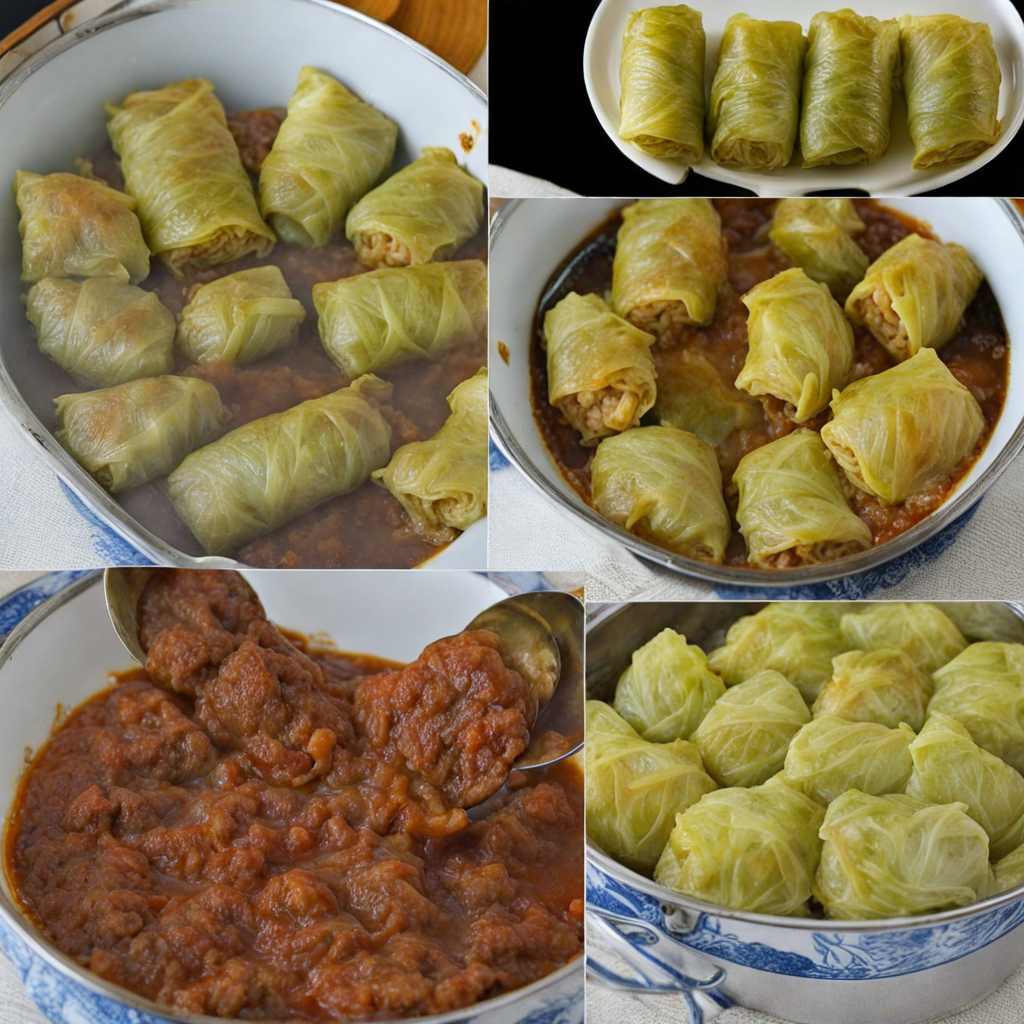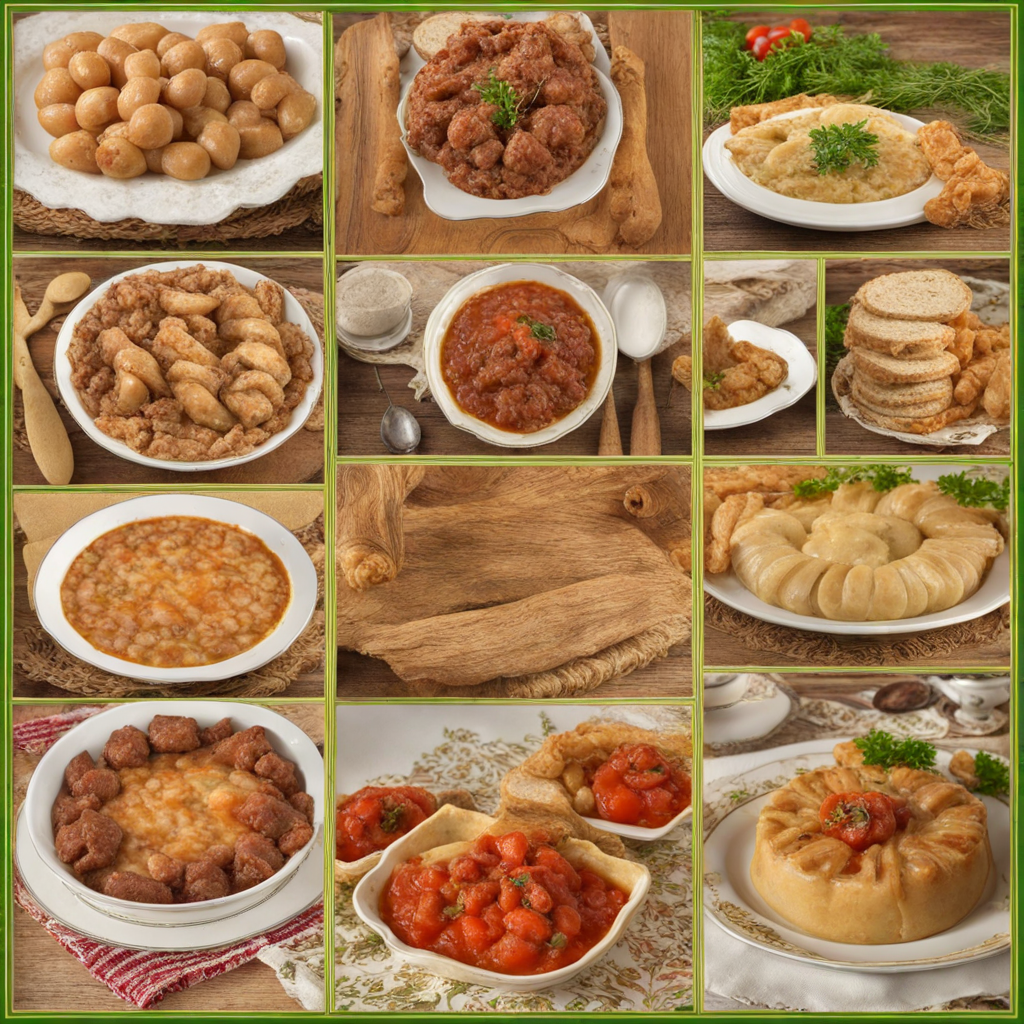Sarma
Sarma is a beloved traditional dish in Serbia that encapsulates the essence of hearty, comforting cuisine. This dish typically consists of finely minced meat, often a mix of pork and beef, combined with rice and a medley of spices such as paprika, salt, and pepper. The mixture is then carefully wrapped in pickled cabbage leaves, which impart a subtle tanginess to the overall flavor profile. The cabbage not only serves as a vessel for the filling but also adds a delightful crunch that contrasts beautifully with the tender meat inside. Cooking sarma is a labor of love, as it requires slow simmering in a rich tomato sauce or broth, allowing the flavors to meld and deepen. The dish is usually prepared in large batches, making it perfect for family gatherings or celebrations. As it cooks, the aroma fills the kitchen, inviting everyone to gather around the table. The resulting dish is a warm, savory delight that embodies rustic Serbian hospitality. When served, sarma is often accompanied by a dollop of sour cream, which enhances its richness and adds a refreshing touch. It can be enjoyed on its own or paired with crusty bread, making it a satisfying meal for any occasion. For those looking to explore new tastes, sarma offers an inviting introduction to Serbian cuisine, showcasing the country's love for bold flavors and traditional cooking techniques.
How It Became This Dish
The Rich History of Сарма: A Serbian Culinary Tradition #### Origins of Сарма Сарма, a beloved dish in Serbian cuisine, consists of fermented cabbage leaves stuffed with a savory mixture of minced meat, rice, and various spices. The word "сарма" itself comes from the Turkish word "sarma," meaning "wrapped." The dish exemplifies the fusion of culinary influences that have shaped Serbian gastronomy over centuries. Its roots can be traced back to the Ottoman Empire, which ruled much of the Balkans from the 14th to the early 20th century. The introduction of the fermented cabbage technique, believed to have originated with the ancient Chinese and later adopted by various European cultures, created a perfect canvas for the stuffing that defines Сарма today. The use of cabbage leaves for wrapping food is not unique to Serbia; similar dishes can be found across Eastern Europe and the Mediterranean, such as the German "Kohlrouladen" and the Greek "Dolmades." However, what sets Serbian Сарма apart is its distinctive blend of spices and regional ingredients, which vary from household to household, reflecting local customs and family traditions. #### Cultural Significance Сарма holds a special place in Serbian culture, often regarded as a comfort food that evokes memories of family gatherings and celebrations. It is commonly associated with winter festivities and is a staple during Christmas and New Year's celebrations. This seasonal prominence can be attributed to the tradition of preparing Сарма with pickled cabbage, which is harvested in late autumn. The fermentation process not only enhances the flavor but also preserves the cabbage for the cold winter months. In Serbian households, the preparation of Сарма is often a communal activity. Families come together to make large batches, with each member contributing to the process. This collective effort fosters a sense of community and strengthens familial bonds. The dish is often served during important religious holidays, signifying abundance and prosperity. It is also a symbol of hospitality, as guests are warmly welcomed with a hearty serving of Сарма. #### Ingredients and Preparation The classic filling for Сарма typically consists of ground pork or beef, mixed with rice, finely chopped onions, and a medley of spices such as paprika, salt, and pepper. Some families add smoked meat or bacon for depth of flavor, while others incorporate herbs like dill or thyme. The filling is then encased in the pickled cabbage leaves, which are carefully rolled to ensure a snug fit. The cooking process is equally significant, as Сарма is traditionally slow-cooked in a pot with a base of sauerkraut or leftover cabbage leaves, often accompanied by smoked meats or sausages. This method allows the flavors to meld and intensify over several hours, resulting in a rich, hearty dish. The final touch typically involves a drizzle of sour cream before serving, adding a creamy contrast to the savory filling. #### Development Over Time As Serbia navigated through various historical changes, including the dissolution of the Ottoman Empire and the emergence of Yugoslavia, the culinary landscape evolved, and so did Сарма. During the 20th century, as people migrated and families relocated, the dish adapted to include regional variations influenced by neighboring countries. The use of different types of cabbage, alternative meats, and unique spices reflects this culinary evolution. In contemporary times, Сарма continues to be a cherished dish, celebrated in both traditional and modern interpretations. While some families adhere strictly to age-old recipes, others experiment with vegetarian versions, using mushrooms or lentils as a filling. This adaptability highlights the dish's resilience and its capacity to bridge generational divides within Serbian culture. #### Sarmas in the Global Context The global diaspora of Serbs has also played a role in popularizing Сарма beyond the borders of Serbia. As Serbian communities established themselves in countries such as the United States, Canada, and Australia, they brought with them their culinary heritage. Restaurants and home cooks alike have introduced Сарма to a broader audience, often adapting the dish to suit local tastes while preserving its essence. In the context of food globalization, Сарма stands as a testament to the enduring nature of traditional recipes. Food enthusiasts around the world are increasingly interested in international cuisines, leading to a resurgence of interest in authentic dishes like Сарма. Culinary events, cookbooks, and food blogs often highlight the dish, celebrating its rich history and cultural significance. #### Conclusion Сарма is more than just a dish; it is a reflection of Serbian identity, tradition, and resilience. Its journey from the Ottoman kitchens to modern Serbian homes encapsulates a rich tapestry of history, culture, and communal spirit. As families continue to pass down their unique recipes and traditions, Сарма will undoubtedly remain a cherished symbol of Serbian culinary heritage for generations to come. In summary, the history of Сарма is intertwined with the story of Serbia itself. From its origins in the Ottoman Empire to its role as a familial and communal dish, Сарма embodies the flavors and traditions of a nation. Its evolution speaks to the adaptability of cultures and cuisines, ensuring that this beloved dish will continue to be enjoyed both in Serbia and around the world.
You may like
Discover local flavors from Serbia







